Being Human
Artist: Prune Nourry
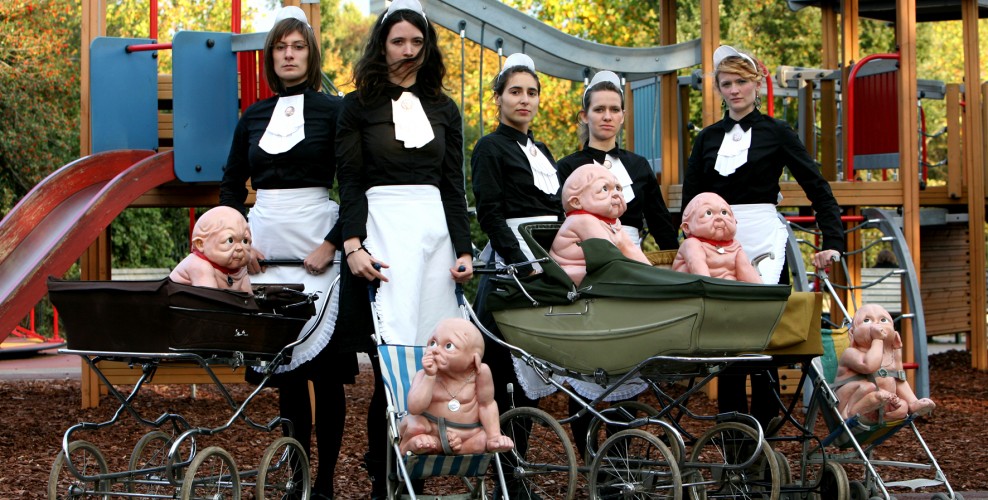
Artist: Prune Nourry
Mixed-mixed media artist Prune Nourry’s layered mise-en-scenes constitute a hybrid; multidisciplinary works that could only be generated from a multidisciplinary perspective.
The impact of biogenetics upon changing cultural values underpins the artist’s repertoire. Technological advancements, such as in vitro fertilization and genetic engineering, provide just some of the variables within the artist’s aesthetic experiments in cultural-genetic crossbreeding.
The results are often dystopic and rife with sociological and philosophical conundrums. However, highly creative accompanying neo-mythologies provide darkly humorous relief to the bioethical standpoint to which Nourry ultimately appeals in making sense of the world – current and hypothetical.
Underlying it all is the timeless metaphysical question: what does it mean to be human? Especially now, in our all-too-often dehumanizing Brave New World.
Kid-in spoke with Prune Nourry from China- there on the second leg of her investigation into the phenomenon of gender-selection-to discuss the impact of the artist’s upbringing upon her unique art.
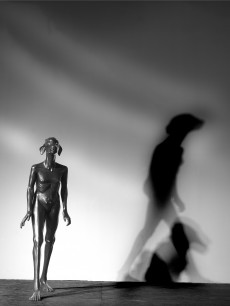 Were you surrounded by art as a child?
Were you surrounded by art as a child?Fabrics! My father was a fabric designer, and fabric is quite visual and sensual, like sculpture. Also, as a Parisian you’re surrounded by quite a bit of beauty, which is what makes this city an eternal inspiration.
Artistic. I wasn’t interested in the Sciences unless they were directly linked to understanding our human essence, as in the social sciences.
I was lucky to know from childhood. I never really thought about it, just let things follow their natural course: theater – to drawing – to sculpture. I chose to pursue my higher education in an Art and Craft School. I wanted to learn the techniques, and thought the concept was more personal. I specialized in wood sculpture at the Ecole Boulle while working on personal projects and exhibitions.
My family has always been supportive, respecting my art and its modus operandi: independence and creativity.
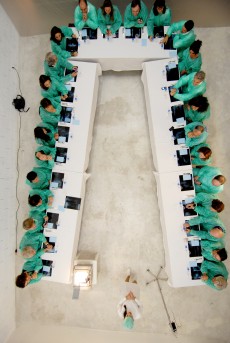 There’s a dichotomy when deciding career paths. Art vs. science is one example. How did the Arts and Sciences become connected for you?
There’s a dichotomy when deciding career paths. Art vs. science is one example. How did the Arts and Sciences become connected for you?They are connected for me through bioethics – the philosophy of science which questions the essence of the human being. For example, what makes us human? – a question also raised in art, as in Gauguin’s painting, Where Do We Come From, What Are We, Where are we going?
It all started with Primo Levi’s book Si C’est un Homme, which I studied at school. I did a painting series about it, presented at my Baccalauréat. Levi raises the ethical question concerning the frontier between Humans and Animals. How the Nazis attempted to dehumanize by using people like workers and conducting experiments upon them like laboratory animals.
I then studied Boris Cyrulnik, the philosopher Giorgio Agamben and the genetician Stephen Minger, meeting and interviewing some of them to create my first performance as a visual artist, Bébés Domestiques, in London.
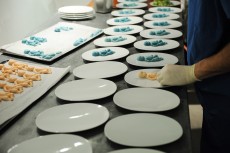 That performance was a reflection on this human/animal frontier, and how the lines shifts over time. In today’s society, for example, pets are treated like children, a phenomenon sociologists call “pet anthropomorphization”.
That performance was a reflection on this human/animal frontier, and how the lines shifts over time. In today’s society, for example, pets are treated like children, a phenomenon sociologists call “pet anthropomorphization”.
Camille Claudel, Edgar Degas, Auguste Rodin, Niki de St. Phalle, Giacometti, Anselm Kieffer, and Christian Boltanski…
When I was ten, my father and I curated our first show. It was called Effet Mer, a play on words meaning both ephemeral and effect from the Sea. The opening took place on the beach and the artist featured was the sea itself, which year after year had sculpted a shipwreck into dozens of abstract wooden works, exhibited on the beach. We sent out an invitation and did an opening on the sand.
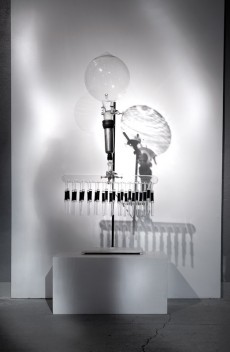 That does sounds seem to encapsulate so much of your sculpture-driven, phenomena-oriented, installation approach to performance art.
That does sounds seem to encapsulate so much of your sculpture-driven, phenomena-oriented, installation approach to performance art.You can generate several metaphors utilizing concepts of creativity and procreation. Especially with sculpting, which is very sensual. Also, there is the strong experience of mystery, before the sculpture comes out of the mold.
And, similar to new technologies in reproduction (like In vitro fertilization) sculptors today have the possibility to use computers and 3D printers, and hardly even touch the material themselves.
It’s paradoxically attractive. In a way, it’s fascinating and represents evolution. But evolution can be dangerous if the ethical consequences are not weighed.
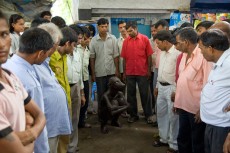 India appears to have been a great catalyst for your gender-selection theme. What drew you to India?
India appears to have been a great catalyst for your gender-selection theme. What drew you to India?I chose India as a first step because it’s a huge issue there that sociologists refer to as “men without women” – a big issue also in China, which is my next step, then maybe Armenia.
I’m actually writing from China where I’m doing a research trip. It’s super-inspiring. Let’s see what comes out of it. We don’t want to talk too much about the project now, too early!
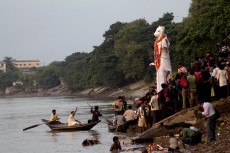 Human participation is so vital to your repertoire in general. What were the implications, in Holy Holi, for the young Indian girls participating?
Human participation is so vital to your repertoire in general. What were the implications, in Holy Holi, for the young Indian girls participating?They were playing Holi, which is a huge celebration of fertility in India, where people throw brightly colored pigments in the streets. Ironically, however, this day is also the most dangerous for women. It’s an excuse for men to get drunk, with the highest rate of abuse towards women. Rather strange contrast.
We women created our own white-colored version of Holi. It took place inside a Gaushala – an orphanage for sacred cows, also symbols of fertility. The girls live around the Gaushala, and have been nurtured off of the protected cows’ milk their entire childhood.
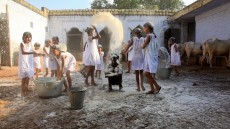 The aim was to highlight the importance of females, as well as these animals, in society. We make the parallel between the “holiness” of both. It was a very special day for the girls, turning this familiar place into a playground with dancing and being filmed. They loved it. They really fused with the sculpture. I decided it was natural for the sculpture to stay at the Gaushala after the performance. It belonged there.
The aim was to highlight the importance of females, as well as these animals, in society. We make the parallel between the “holiness” of both. It was a very special day for the girls, turning this familiar place into a playground with dancing and being filmed. They loved it. They really fused with the sculpture. I decided it was natural for the sculpture to stay at the Gaushala after the performance. It belonged there.
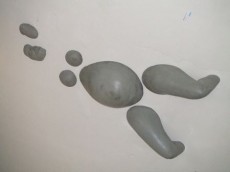 It’s been said that your work walks the line between art and activism. Is there the direct intention behind it to change lives/change political and cultural structures?
It’s been said that your work walks the line between art and activism. Is there the direct intention behind it to change lives/change political and cultural structures?In my work I highlight social issues. I can’t say I change lives, but I hope to offer people a new way of looking at things, of reading them – but not like you read distant facts from a newspaper. Reading life through art. Through imagination, surprise, experience, and humor. Art is a way to move people and move established structures, and artists have a huge responsibility in their creative freedom.
-Larissa Zaharuk
For more on Prune Nourry, here: http://prunenourry.com/